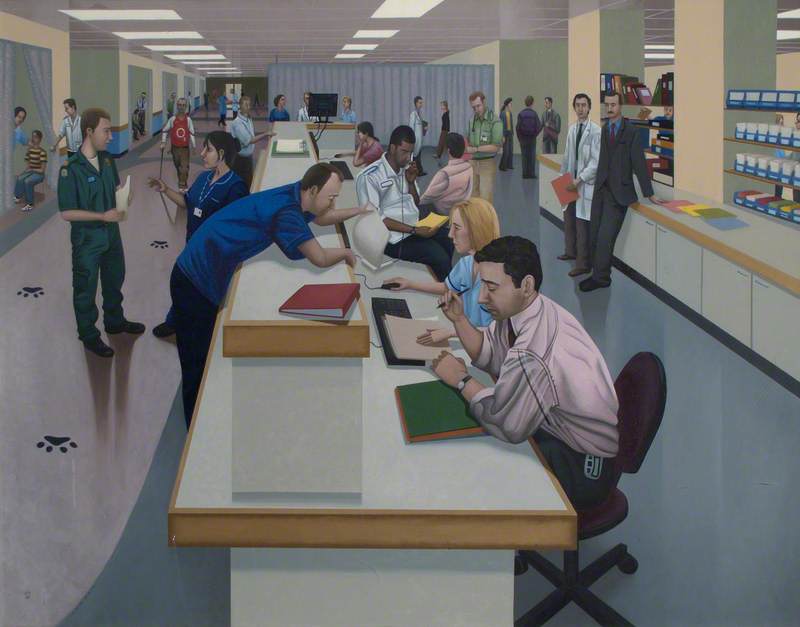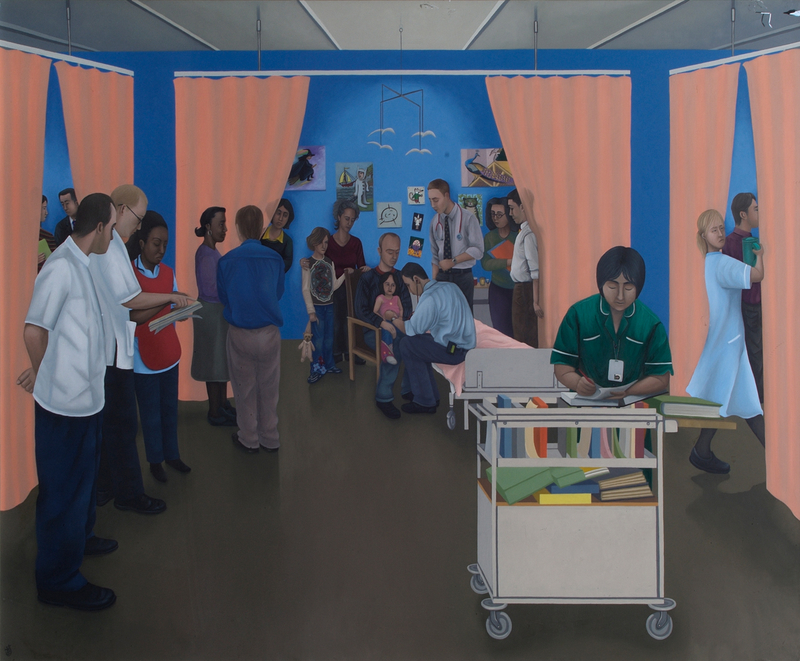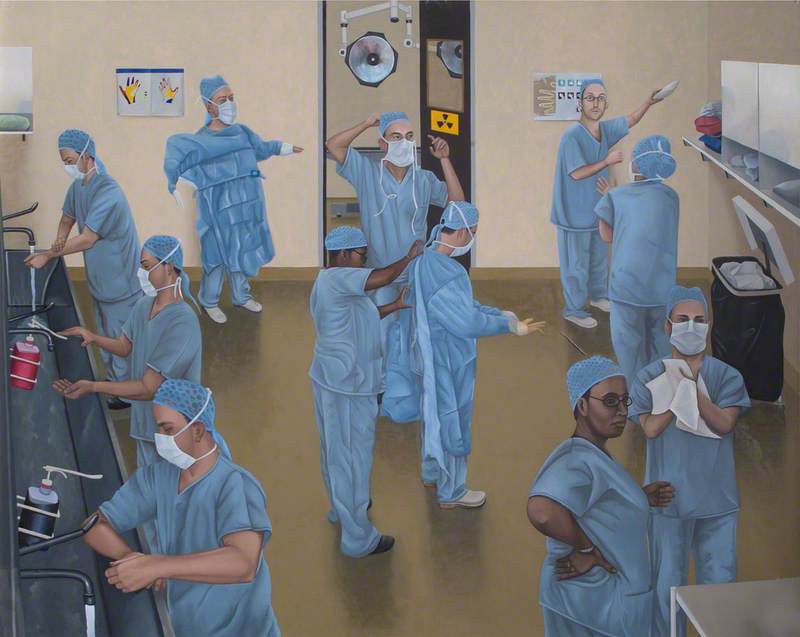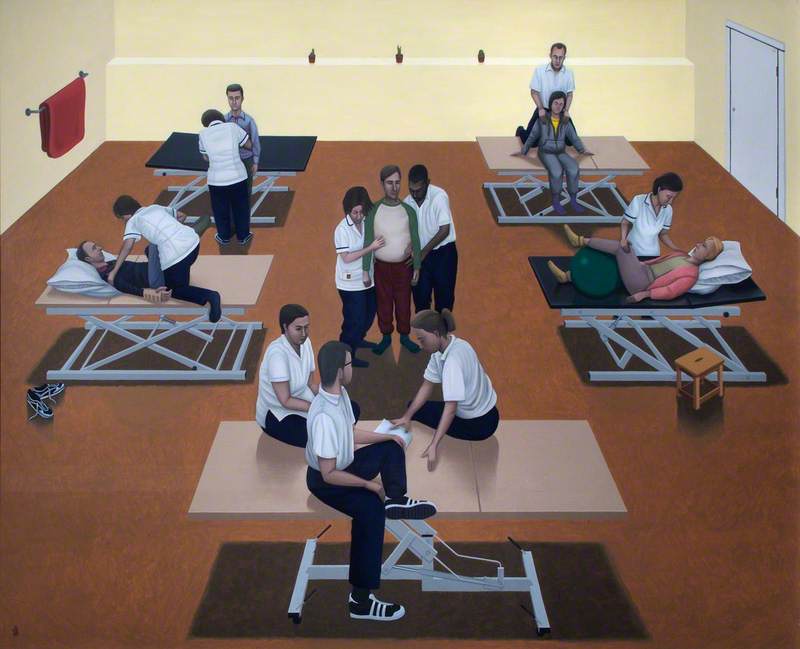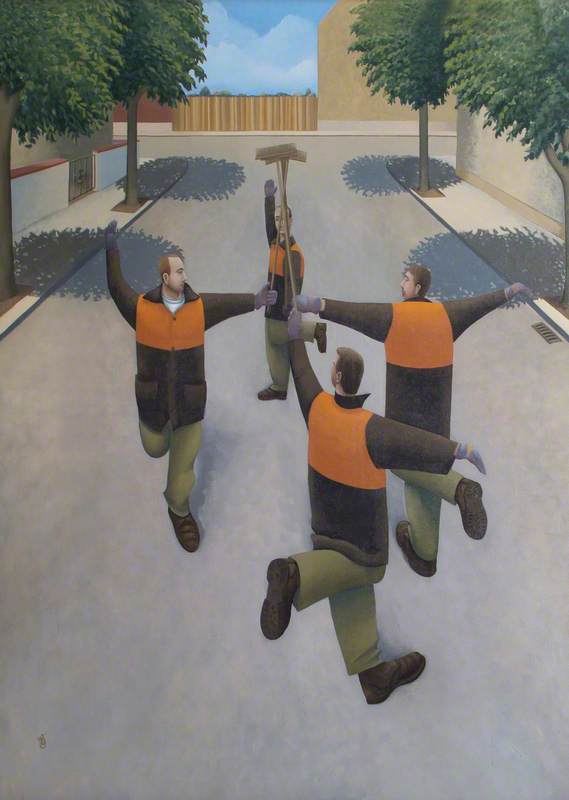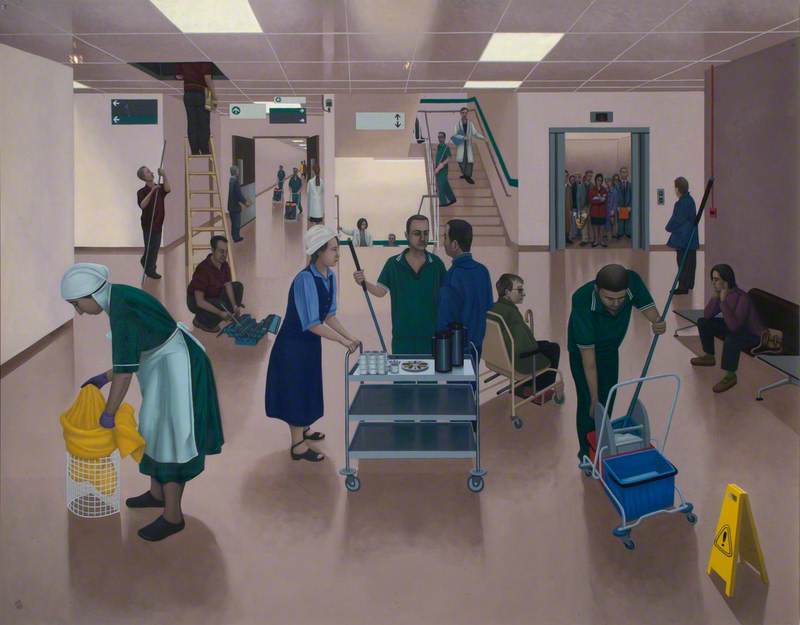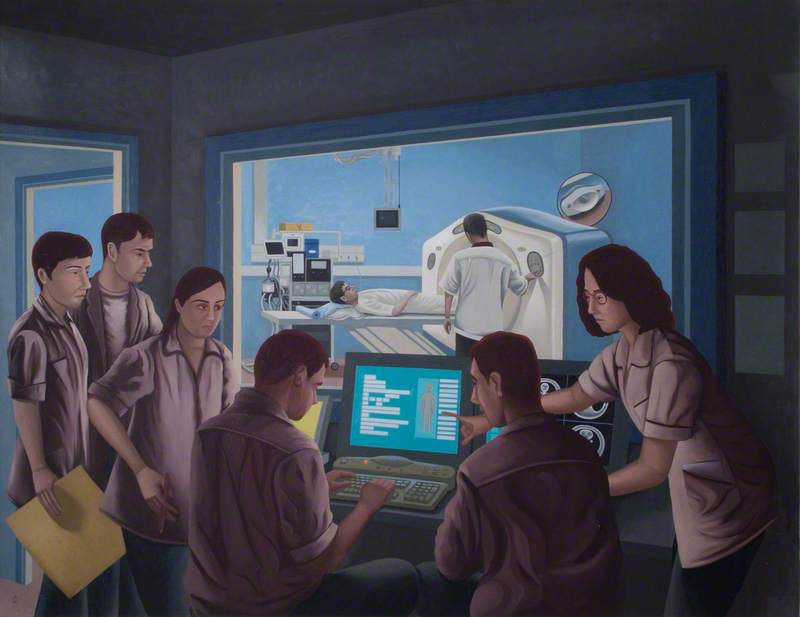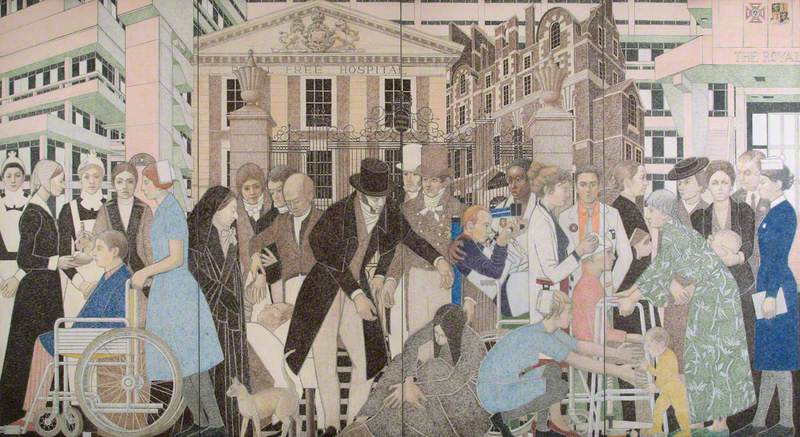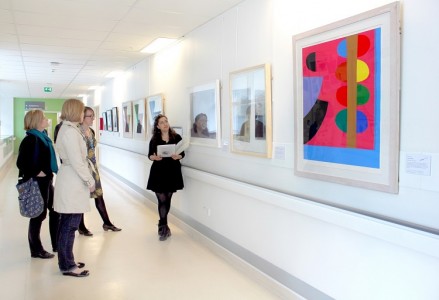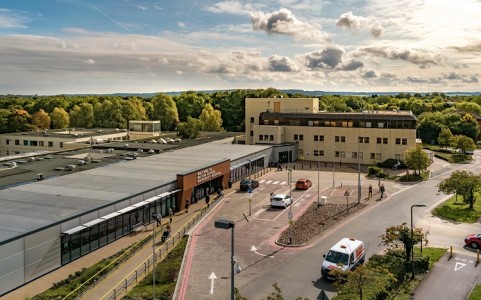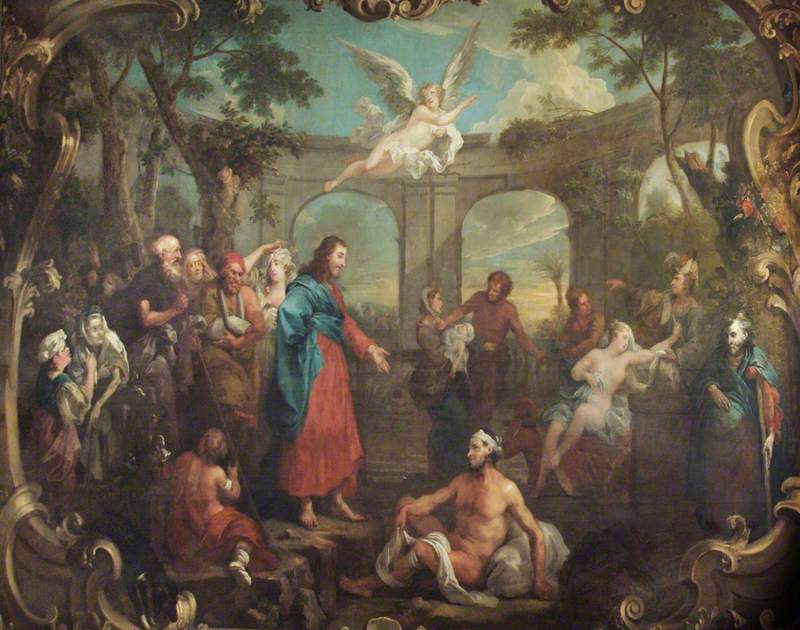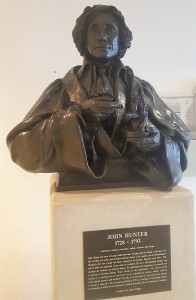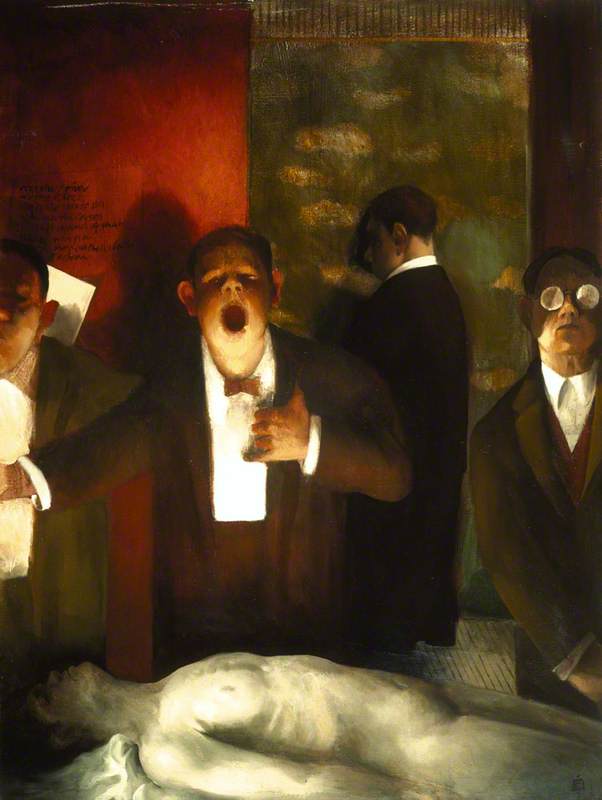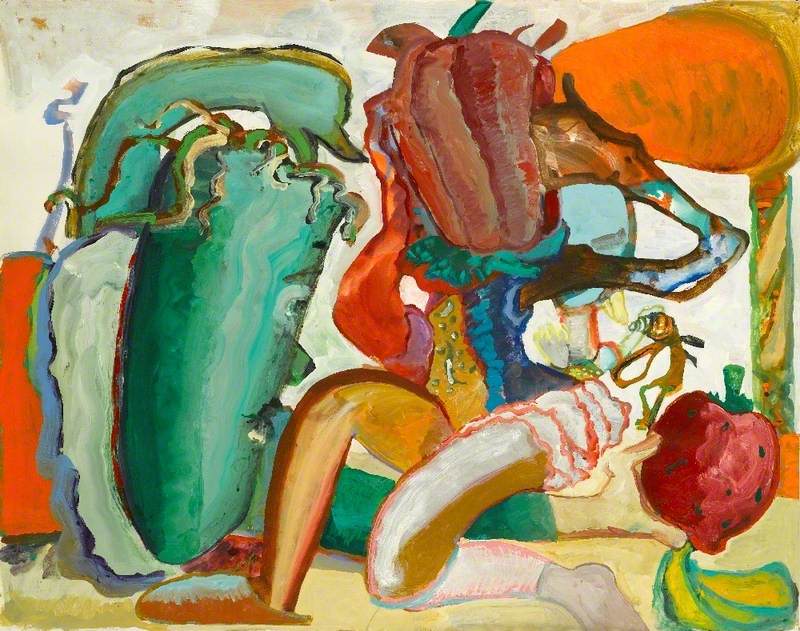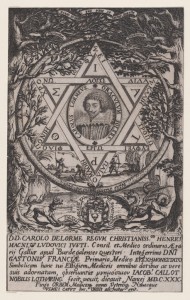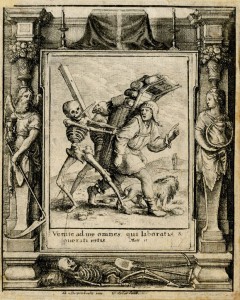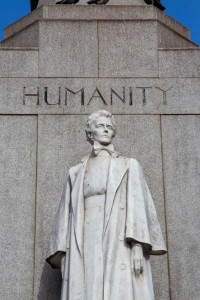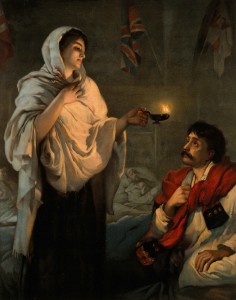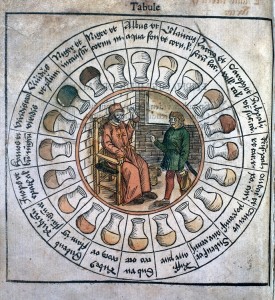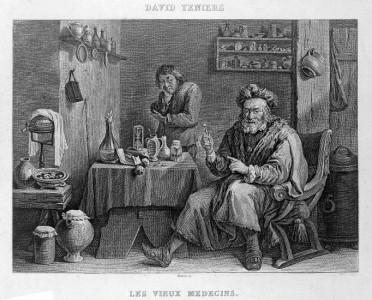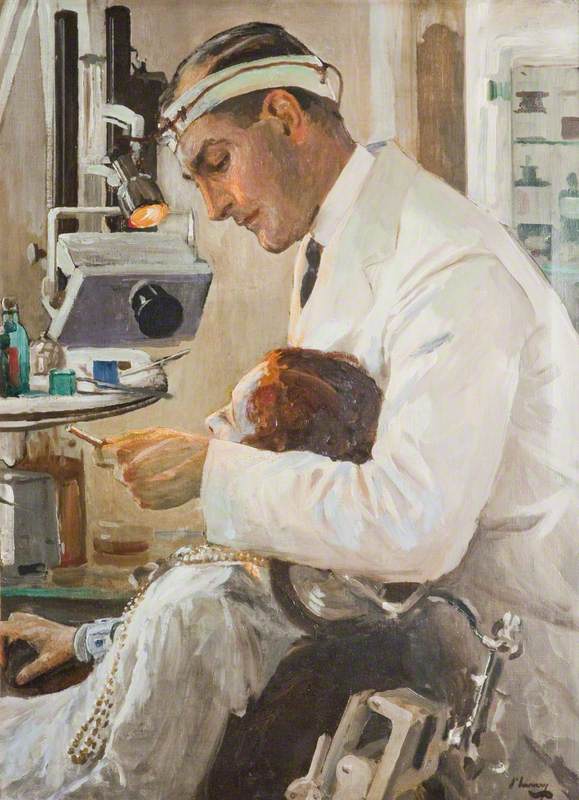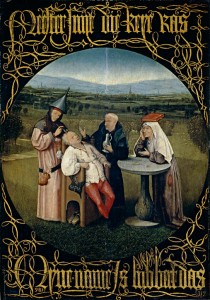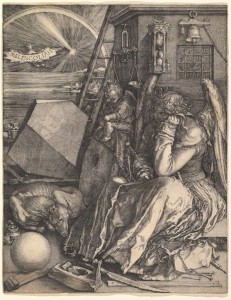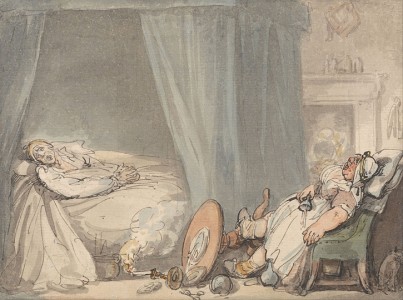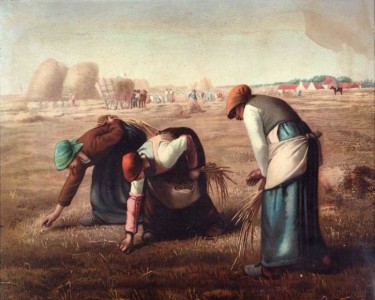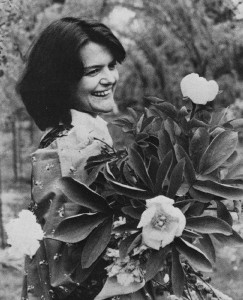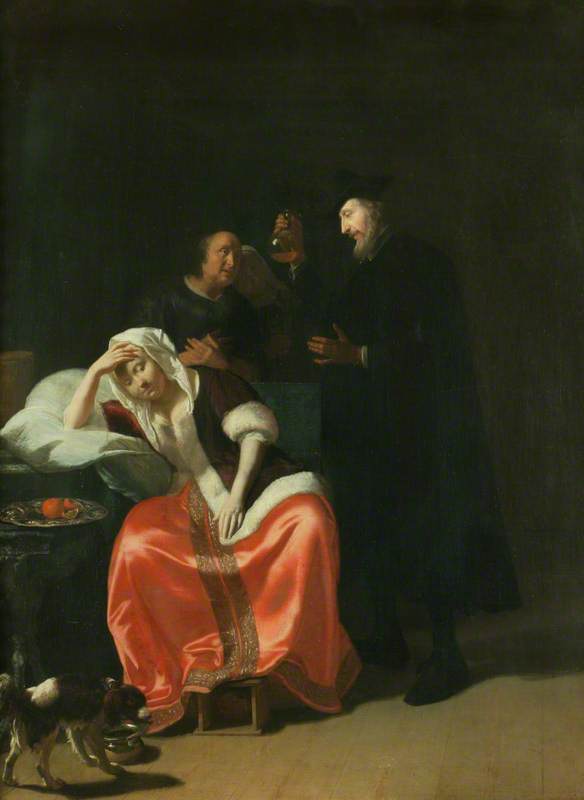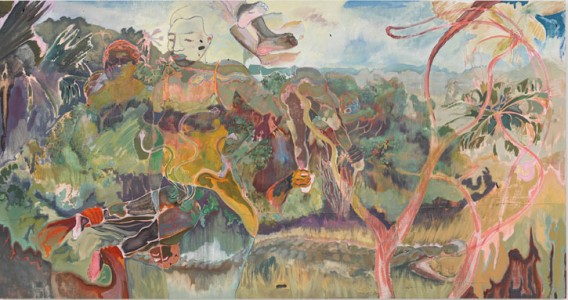Simon Black was a figurative artist who died in 2008 at the age of 49. Born in Manchester, He trained at the Wolverhampton School of Art, and studied etching at Rochdale. He moved to London in 1986.
Over his lifetime he created hundreds of artworks using many different medium – etchings, drawings, watercolours, acrylics and oils, as well as three-dimensional pieces.
Simon used diverse sources in his work including the autobiographical, urban incidents, memory and photographs, grounded in the collective visual environment. Sense of location was crucial for him and the human figure was key. His paintings set up a dialogue of opposites between humour and the serious, the collective and the solitary, movement and inertia, the past and the present.
His source material included drawing, photography and found images. He was interested in religious paintings and the works of the old masters, in the way that they either created or used established visual and metaphorical archetypes to achieve their ends. It is in the relationships between these elements that possibilities of meaning and interpretation appear.
When painting, Simon used a combination of site visits, drawings, photography and painting from life to achieve the finished result. A complex image, for example of an operating theatre, needed a number of visits and a good deal of research. His paintings were done in the studio and although appearing absolutely logical and coherent they are actual visual assemblages of a number of elements and objects.
Simon described his influences as follows:
'Early in my career my aim as an artist was simply to express and define my place in, and relationship to, the world in a visual form. Rather than seeing this in an egotistical way I saw it more as being one of exploring first principles, where the self is the origin of all meaning and of all relationships. I formed an interest in composition, or more accurately the placing of objects, elements and people in a defined space, realising that in this placing lay the key to unlocking meaning.
'Early, more predictable visual influences gave way to an appreciation of a wider variety of sources, from historical painting, to the scenes in my local high street, television and newspaper/found images. The Royal Free Hospital commissions fuse echoes of Poussin, Uccello and Spencer with the frozen moment redolent of the digital twenty-first-century eye.'
Over his lifetime, Simon exhibited widely in London and the UK. He found this to be both valuable and rewarding, as he enjoyed the feedback of an audience, and interesting, illuminating reactions to his work. His work is highly accessible and speaks to people on many different levels: as an amusing narrative on the day-to-day; as works that tap into the emotional experience of living in a city; as a commentary on how we interact and live alongside one another in the modern world.
In his early years, he ran workshops with children and had been involved in curating exhibitions including notably, 'Angels & Mechanics', a touring exhibition about fertility and technology. He found working on commissions to be inspiring and they enabled him to unite and explore key themes with which he had been fascinated for a long time.
In 2001 he won a competition for the Royal Free Hospital Trust with the painting The Sweepers Dance and as a consequence was commissioned to undertake a series of six paintings about hospital life. These are now on permanent display in the Atrium which is the hospital's conference room. He was immensely proud that his work would be on display in a public arena as he felt strongly that art should be enjoyed and shared with as wide an audience as possible. During his illness, he experienced the very things that he had painted, and that gives these commissions an additional authority as well as a sad irony.
He described the Royal Free commissions in the following way:
'Recent commissions have enabled me to explore and consolidate themes and interests in my work which include depicting groups of individuals, for example workers, interacting in a highly choreographed way – a form of heightened reality. The geometry and relationships in the paintings function both on a tangible and in an emotional way.
'This is one of six paintings commissioned as a result of winning first prize in the Art Royal Free Project. The aim was to depict the hospital workers and their interactions. My approach was to create timeless, dignified and accurate representations of the different staff members, from surgeon to cleaners, and locate them within balanced and classic compositions.
'It was also important that the paintings would be accessible to a wide audience whilst simultaneously reflecting my painterly interests. I used drawings and photographs as sources for the finished paintings and bore in mind painters like Rembrandt, Rivera, Spencer, Poussin and Roberts.'
Since their installation, the commissions continue to receive very positive feedback.
Other commissions were undertaken for private individuals and The Financial Conduct Authority (FCA) owns five of his paintings including a major commission.
His painting The Martyr is now in the collection of the Imperial War Museum.
His last body of work was called 'Spirits of London' and was a series of 25 paintings about city life. The paintings are predominantly of London characters – a bus conductor, a man on the tube, a book seller on the South Bank, buskers – but also the animal life that exists in the city such as a mouse, a heron and blackbirds. These paintings, along with a wide example of Simon's other work, can be seen on the website www.simonblack.co.uk.
Raina Sheridan, Simon Black's widow
